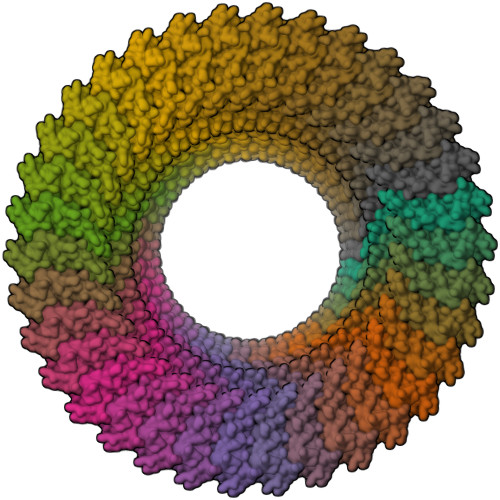Symmetry mismatch in the MS-ring of the bacterial flagellar rotor explains the structural coordination of secretion and rotation.
Johnson, S., Fong, Y.H., Deme, J.C., Furlong, E.J., Kuhlen, L., Lea, S.M.(2020) Nat Microbiol 5: 966-975
- PubMed: 32284565
- DOI: https://doi.org/10.1038/s41564-020-0703-3
- Primary Citation of Related Structures:
6SCN, 6SD1, 6SD2, 6SD3, 6SD4, 6SD5 - PubMed Abstract:
The bacterial flagellum is a complex self-assembling nanomachine that confers motility to the cell. Despite great variation across species, all flagella are ultimately constructed from a helical propeller that is attached to a motor embedded in the inner membrane. The motor consists of a series of stator units surrounding a central rotor made up of two ring complexes, the MS-ring and the C-ring. Despite many studies, high-resolution structural information is still lacking for the MS-ring of the rotor, and proposed mismatches in stoichiometry between the two rings have long provided a source of confusion for the field. Here, we present structures of the Salmonella MS-ring, revealing a high level of variation in inter- and intrachain symmetry that provides a structural explanation for the ability of the MS-ring to function as a complex and elegant interface between the two main functions of the flagellum-protein secretion and rotation.
Organizational Affiliation:
Sir William Dunn School of Pathology, University of Oxford, Oxford, UK.


















